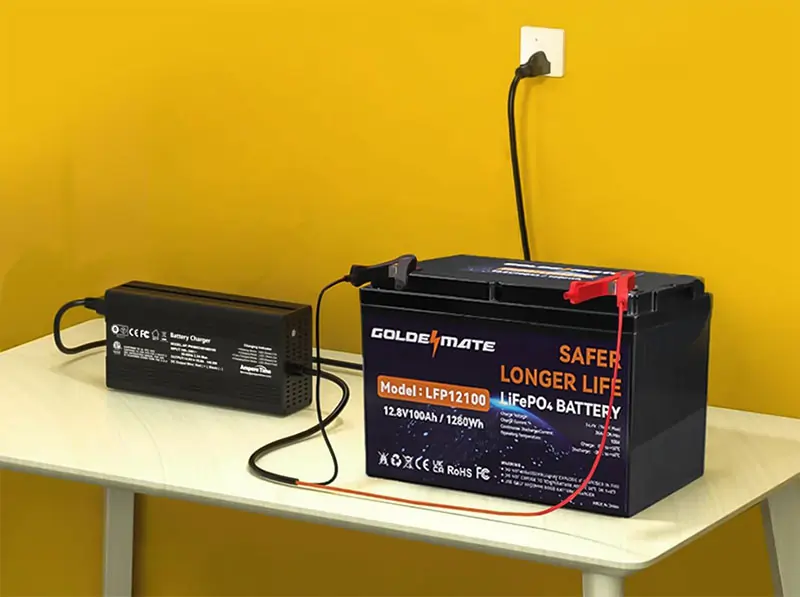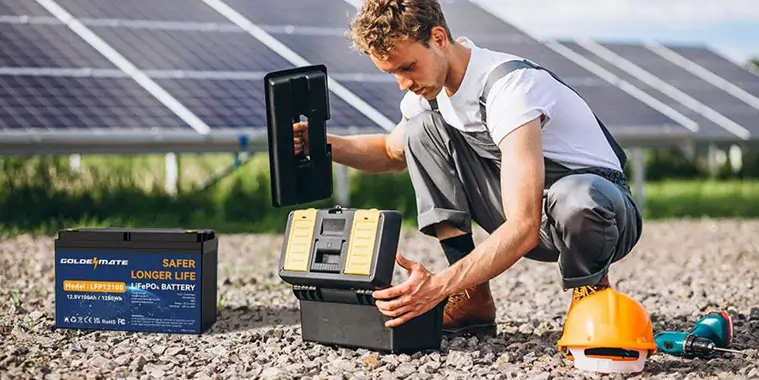Charging Ahead: The Advancements in Lithium Battery Charging Technology

In a world increasingly dependent on portable electronic devices and the electrification of various industries, lithium-ion batteries have emerged as the frontrunners in energy storage technology. These batteries power everything from smartphones to electric vehicles, making efficient charging technology a vital component of our daily lives. This article explores the remarkable advancements in lithium battery charging technology, from its historical roots to cutting-edge innovations that are reshaping the way we power our devices and vehicles.
Understanding Lithium Batteries
What Are Lithium Batteries?
Lithium-ion batteries are rechargeable energy storage devices that have gained widespread popularity due to their high energy density, long cycle life, and relatively low self-discharge rate. Their design revolves around lithium ions moving between two electrodes, typically composed of lithium cobalt oxide and graphite, during charge and discharge cycles.
Common Applications
Lithium batteries find applications in a plethora of industries, including consumer electronics, renewable energy storage, and electric transportation. The lightweight and high-energy density properties of lithium batteries make them ideal for devices like laptops, smartphones, and tablets. They are also the primary choice for electric vehicles (EVs) and energy storage systems used in homes and businesses.
The Need for Efficient Charging
Efficient charging is essential to maximize the performance and lifespan of lithium batteries. The way a battery is charged directly impacts its capacity, cycle life, and safety. Historically, charging lithium batteries posed challenges, but recent advancements in charging technology have transformed this landscape.
Historical Perspective
Early Lithium Battery Charging Methods
In the early days of lithium-ion batteries, charging was a relatively straightforward process, relying on constant voltage charging. This method, however, had limitations, including slower charging rates and issues related to overcharging, which could lead to safety concerns.
Limitations of Traditional Charging
Traditional charging methods faced challenges such as prolonged charging times and limited adaptability to different battery chemistries. As technology evolved, these limitations prompted researchers and engineers to explore more efficient and versatile charging solutions. To take advantage of this exclusive offer, click here to BUY $69.99 today.
Key Advancements in Charging Technology

Fast Charging
Introduction to Fast Charging
Fast charging is a game-changer in the world of lithium battery technology. It allows devices and electric vehicles to be charged rapidly, reducing downtime and enhancing user convenience. This technology relies on higher charging currents and voltages, but it demands careful management to prevent overheating and damage to the battery.
Advantages and Challenges
Fast charging offers numerous advantages, including reduced charging times and increased accessibility for EVs. However, it also comes with challenges such as thermal management and potential degradation of the battery’s lifespan. Manufacturers have been working diligently to address these issues.
Notable Fast Charging Solutions
Several fast charging solutions have emerged, with Tesla’s Supercharger network being one of the most recognized. Other companies like Volkswagen and various startups are also investing heavily in expanding fast charging infrastructure to make electric vehicles more practical for consumers.
Wireless Charging
Principles of Wireless Charging
Wireless charging technology eliminates the need for physical cables and connectors. It operates on the principle of electromagnetic induction, allowing energy to be transferred from a charging pad to the device without direct contact.
Advantages and Limitations
Wireless charging offers enhanced user convenience and reduces clutter associated with cables. However, its efficiency is slightly lower compared to traditional wired charging, and the charging distance is limited. Nevertheless, advancements in wireless charging are continually improving these aspects.
Prominent Wireless Charging Technologies
Qi wireless charging is one of the most widely adopted standards, commonly used for smartphones and smartwatches. Companies like Apple, Samsung, and Google have integrated Qi charging into their devices. Additionally, there are innovations in wireless charging for electric vehicles, which promise a future where EVs can be charged without plugging in.
Smart Charging Algorithms
Importance of Smart Charging
Smart charging algorithms are essential for optimizing the charging process, ensuring efficiency, safety, and battery longevity. These algorithms take into account factors like battery temperature, state of charge, and user preferences to deliver the best charging experience.
How Smart Algorithms Work
Smart charging algorithms use real-time data and machine learning to adjust the charging parameters dynamically. They can slow down or speed up charging, distribute energy evenly across cells, and prioritize safety.
Case Studies of Smart Charging Implementation
Companies like Tesla have incorporated advanced smart charging algorithms into their vehicles, enabling features like “Scheduled Charging” to optimize charging times according to electricity rates. Such innovations not only benefit individual users but also contribute to the overall stability of the electric grid.
Sustainability and Lithium Battery Charging
Environmental Implications
The rapid adoption of lithium batteries has led to concerns about the environmental impact, particularly in terms of raw material extraction and disposal. The extraction of lithium, cobalt, and other elements can have ecological consequences, and the disposal of batteries presents challenges related to recycling and waste management.
Sustainable Charging Solutions
To address these concerns, sustainable charging solutions are being developed. These include using renewable energy sources to power charging infrastructure, designing batteries with recyclability in mind, and implementing circular economy practices to extend battery life.
Recycling and Circular Economy
Efforts to recycle lithium-ion batteries are gaining momentum. Companies like Tesla and Panasonic have established recycling programs to recover valuable materials from old batteries. Additionally, researchers are exploring ways to repurpose retired batteries for secondary uses before recycling.
Future Trends and Innovations
Emerging Technologies
The future of lithium battery charging technology is ripe with innovation. Solid-state batteries, for instance, hold the promise of safer and higher-capacity energy storage. Furthermore, developments in nanotechnology, silicon anodes, and other materials could revolutionize battery technology.
Integration with Renewable Energy
Lithium battery charging is increasingly intertwined with renewable energy systems. Solar and wind energy can be stored in home battery backup systems, providing grid stability and enabling greater utilization of clean energy.
Electric Vehicles and Lithium Battery Charging
The electric vehicle market continues to expand, with major automakers investing heavily in EV technology. Innovations in fast charging infrastructure and battery management systems are crucial to making electric vehicles more accessible and convenient for consumers.
Challenges and Considerations
Safety Concerns
As lithium battery charging technology advances, safety remains a paramount concern. Overcharging, thermal runaway, and battery degradation are ongoing challenges that need to be addressed through engineering and regulation.
Heat Management
Fast charging and high-energy-density batteries generate heat, which can be detrimental to battery performance and safety. Effective thermal management systems are critical to mitigate these issues.
Standards and Regulations
The industry needs standardized guidelines and regulations to ensure the safety and interoperability of charging infrastructure. International organizations like the International Electrotechnical Commission (IEC) are working on establishing such standards.
Case Studies
Successful Implementations
Several case studies highlight the successful implementation of advanced charging technologies, such as Tesla’s Supercharger network and the integration of wireless charging in smartphones.
Lessons Learned
Analyzing past successes and challenges provides valuable insights for future developments in lithium battery charging technology.
Conclusion
The rapid pace of technological advancements in lithium battery charging is shaping the way we power our lives. From fast charging to wireless solutions and smart algorithms, these innovations are enhancing user experiences and driving the adoption of electric vehicles and renewable energy sources. As we navigate challenges related to sustainability, safety, and regulation, it is clear that the future of lithium battery charging is charged with potential, holding the key to a cleaner and more electrified world.


